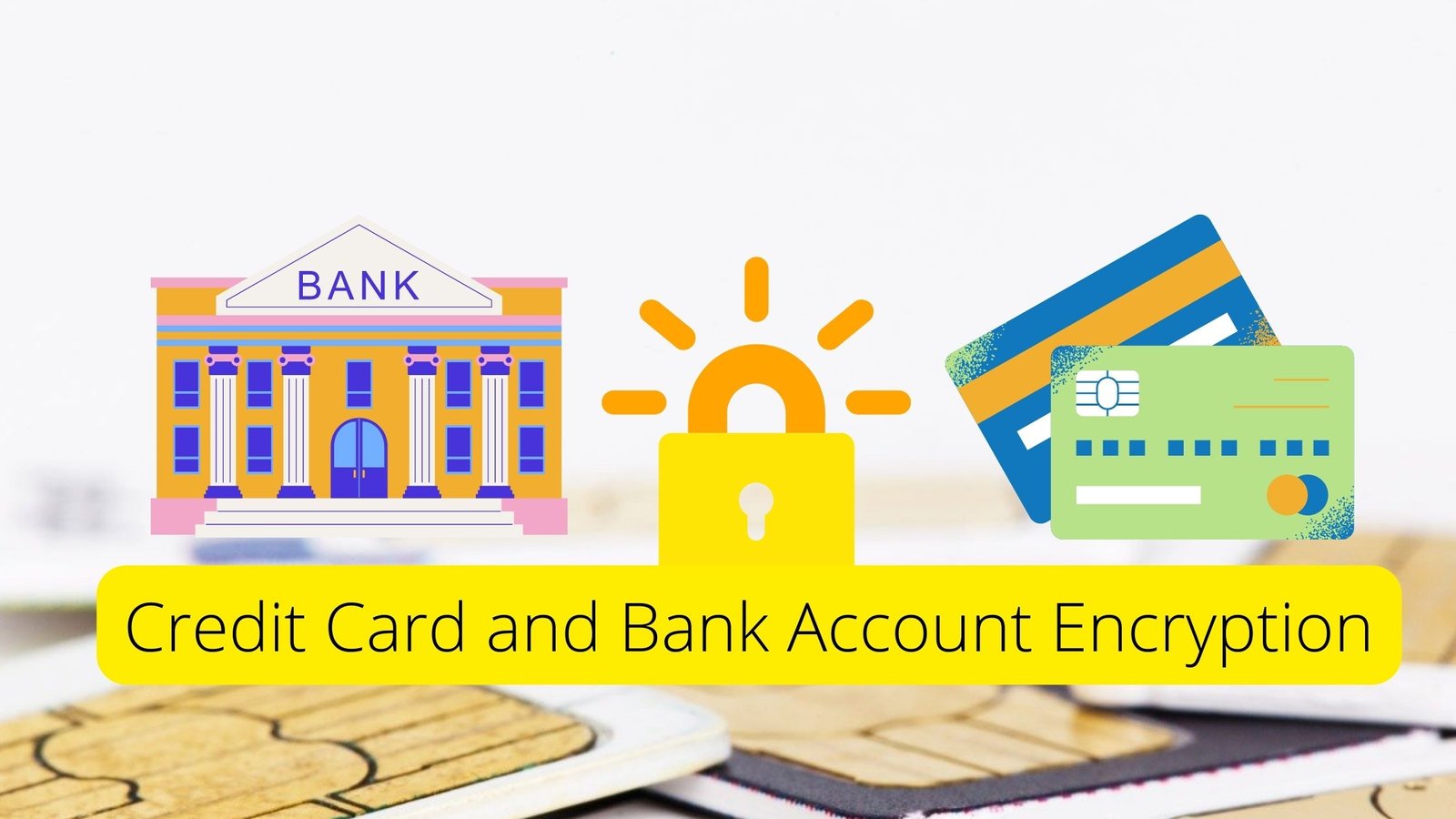Introduction:
In today's digital age, it's more important than ever to protect your financial data from cyber threats. One of the most effective ways to do this is through the use of encryption, which helps to secure your credit card and bank account information when it's transmitted online.
In this blog post, we'll take a look at the basics of credit card and bank account data encryption, and discuss some best practices for keeping your financial information safe.
What is Encryption?
Encryption is a process that uses mathematical algorithms to convert plain text (e.g. your credit card number or bank account information) into a scrambled, unreadable form called ciphertext. The ciphertext can only be decrypted (i.e. converted back into plain text) using a special key or password.
This means that if someone intercepts the encrypted data as it's being transmitted, they won't be able to read or use it without the key.
Why is Encryption Important for Credit Card and Bank Account Data?
When you make a purchase online or access your bank account online, your credit card or bank account information is transmitted over the internet. This means that it's possible for someone to intercept this data as it's being transmitted, potentially exposing your financial information to cybercriminals.
Encryption helps to protect your credit card and bank account data by making it unreadable to anyone who doesn't have the key. This helps to prevent your financial information from being accessed or used by unauthorized parties.
Types of Encryption Used for Credit Card and Bank Account Data:
There are several different types of encryption that can be used to protect credit card and bank account data. Some of the most common types include:
- Symmetric key encryption: This type of encryption uses the same key to both encrypt and decrypt the data.
- Asymmetric key encryption: This type of encryption uses a pair of keys – a public key and a private key – to encrypt and decrypt the data. The public key is used to encrypt the data, and the private key is used to decrypt it.
Best Practices for Credit Card and Bank Account Data Encryption:
To ensure the security of your credit card and bank account data, it's important to follow some best practices when it comes to encryption. Here are a few tips:
- Use strong, unique passwords for your accounts: This will help to prevent unauthorized access to your financial information.
- Look for the "HTTPS" prefix in the URL of websites where you enter your financial information: This indicates that the website is using secure, encrypted connections.
- Don't save your credit card information on unsecured websites: If a website doesn't have secure encryption in place, it's best not to save your credit card information on it.
- Use a credit card or debit card with a chip: These cards are more secure than cards with just a magnetic stripe, as they use dynamic data to generate a unique code for each transaction.
- Use two-factor authentication: This adds an extra layer of security to your accounts by requiring you to enter a code or use a security token in addition to your password.
Conclusion:
By using encryption to protect your credit card and bank account data, you can help to keep your financial information safe from cyber threats. By following best practices like using strong passwords, looking for secure connections, and using two-factor authentication, you can help to further enhance the security of your finances.
FAQs
Can I still use my credit card or bank account online if I'm worried about security?
Yes, you can still use your credit card and bank account online if you're concerned about security. By following best practices like those mentioned above, you can help to reduce the risk of your financial information being accessed or used by unauthorized parties. It's also a good idea to regularly review your account statements and report any suspicious activity to your bank or credit card issuer.
How does encryption work?
Encryption uses mathematical algorithms to convert plain text into ciphertext, which is unreadable without a key. The key is used to decrypt the ciphertext and convert it back into plain text. The key can be either a secret password or a pair of keys (a public key and a private key).
Is encryption always used to protect credit card and bank account data?
Not necessarily. Some websites and financial institutions may not use encryption to protect your credit card and bank account data. It's always a good idea to check the security measures in place when entering your financial information online. Look for the "https" prefix in the URL, which indicates that the website is using secure, encrypted connections.
Can encryption be hacked?
It is theoretically possible for encryption to be hacked, but it is extremely difficult to do so. Modern encryption algorithms are designed to be very secure and would require a significant amount of time and computing power to crack.
Is it safe to use my credit card or bank account online?
Overall, it is generally safe to use your credit card or bank account online as long as you take steps to protect your financial information. This includes using strong, unique passwords, looking for secure connections (e.g. the "https" prefix in the URL), and avoiding saving your credit card information on unsecured websites. You can also use a credit card or debit card with a chip, which is more secure than cards with just a magnetic stripe, and use two-factor authentication to add an extra layer of security to your accounts.
What should I do if I suspect my credit card or bank account information has been compromised?
If you suspect that your credit card or bank account information has been compromised, you should immediately take steps to protect your financial information. This may include changing your passwords, monitoring your account statements for suspicious activity, and contacting your bank or credit card issuer to report the issue. It's also a good idea to review your account security settings and consider using additional security measures like two-factor authentication.

Hi, I’m Durgesh Nayak, and I hold a Master’s degree in Commerce with over five years of experience in the banking sector. I am certified with JAIIB and CAIIB, which has given me a solid foundation in financial knowledge. For the past four years, I’ve been sharing my passion for finance through writing money and finance blogs.
My goal is to make complex financial topics accessible and actionable, helping you improve your personal finance, investment strategies, and overall financial planning.

